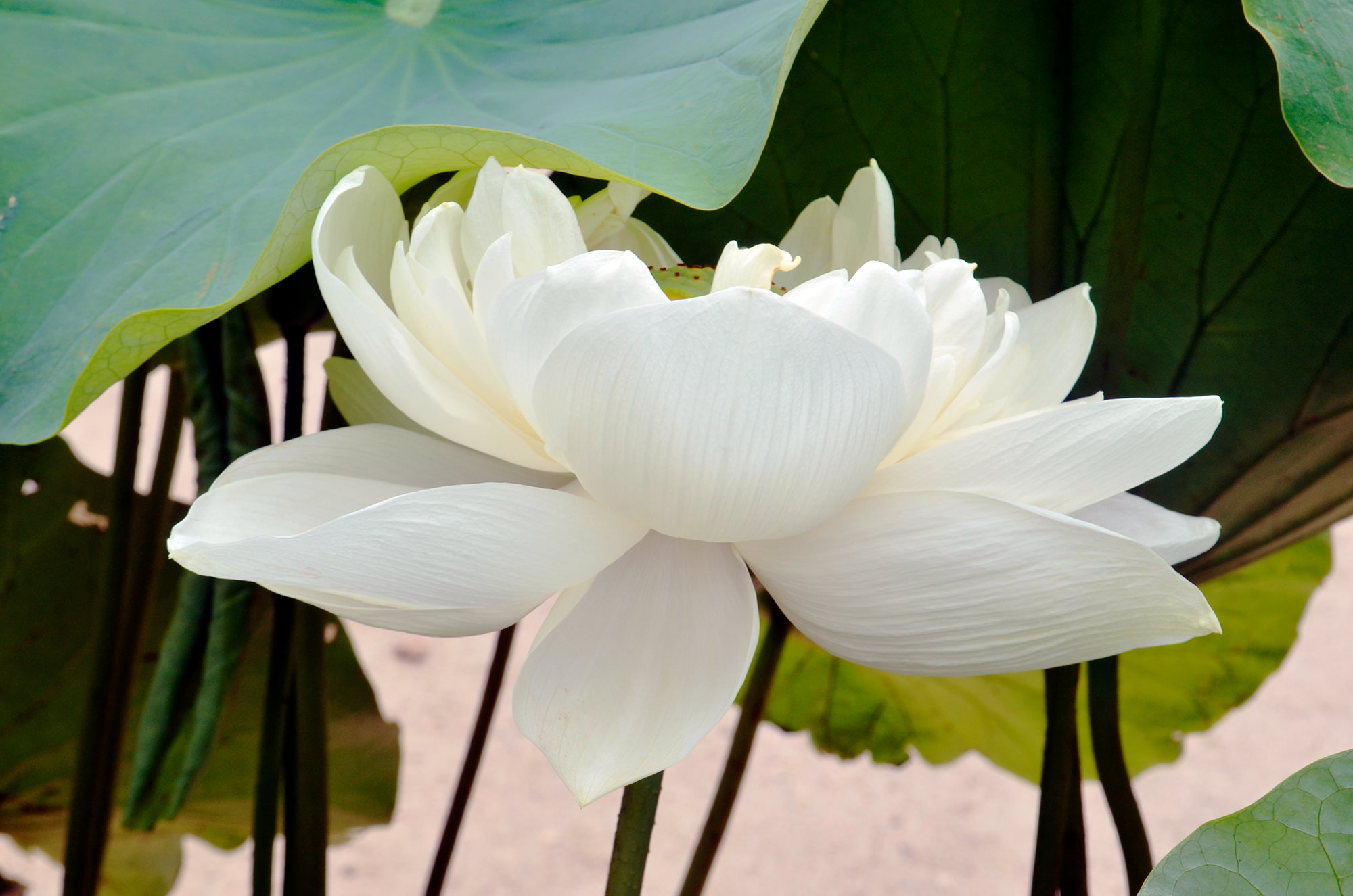- >
- Nanavi News
- >
- Flowering] Aoebas (as of July 25)
Flowering] Aoebas (as of July 25)
-
Last updated:
Jul 27, 2017
-
About the writer:
Nagato Tourism Convention Association

New buds are also growing!

△Aoebas at Saienji 4 flowering plants, 7 buds (as of July 25, 2017)

△Hozu Shonin no Ieori: 0 flowering plants, 1 budding plant (as of July 25, 2017)
A natural treasure of Yamaguchi Prefecture, one of the most beautiful varieties of lotus
Aobass" from the Ohihi district of Qinghai Island
This lotus is a white-flowered, heavily petaled cinnabar, called rozanbai, a particularly beautiful variety of lotus.
This aobas has the following temple legend.
When studying in Tang China, Sumien Shonin of Gyokurenji Temple in Sakai, Senshu (Osaka), brought back old lotus seeds from Rozan and presented them to Gakushin Shonin of Komyoin Temple in Miyajima, Geishu (Hiroshima).
Later, the 10th monk of Saienji Temple, Houju, who was engaged in missionary work throughout Geishu (Hiroshima), paid a visit to Koumyouin and was presented with four seeds of the plant.
This is due to Gakushin Shonin's last will and testament, "You must give (seeds) to a great teacher.
After bringing back the seeds, the monk Hoshu immediately sowed them in the hermitage of his retreat. This is said to have happened in the 5th year of Bunsei (1822).
Later, the lotus was divided between the nearby Saienji Temple and Hofunan (nunnery). (Source: Nagato Historical Walk)
Even today, beautiful flowers can be seen every year from early July to August at Saienji Temple and Hoshu Shonin no Iori (retreat house).
Saienji bluebottle at the best time of the year



The gate of Saienji Temple was designated as a prefectural tangible cultural property in 1982, and is very beautiful with lotus decorations on the demon tiles.
When you visit, please take your time to see not only the flowers but also the temple gate.
Imformation
Name: Aobass at Saienji Temple
Best time to visit: Early July to mid-August
Location: Senzaki 2118, Nagato City, Yamaguchi Prefecture
Admission: Free
Parking: About 5 cars/free
Access: 3 min. walk from Sanden Kotsu Bus "Dainichi" stop, about 45 min. drive from Mine IC on Chugoku Expressway
Name: Aobas at the hermitage of Hoshu Shonin no Ieori
Best time to visit: Early July to mid-August
Location: Senzaki, Nagato City, Yamaguchi Prefecture ( click here for location details)
Admission: Free Parking: No parking (*5 minute walk from Saienji Temple)
Access: 3 minute walk from Sanden Kotsu Bus "Hinsho-mae" stop/
About 45 minutes drive from Mine IC on the Chugoku Expressway


